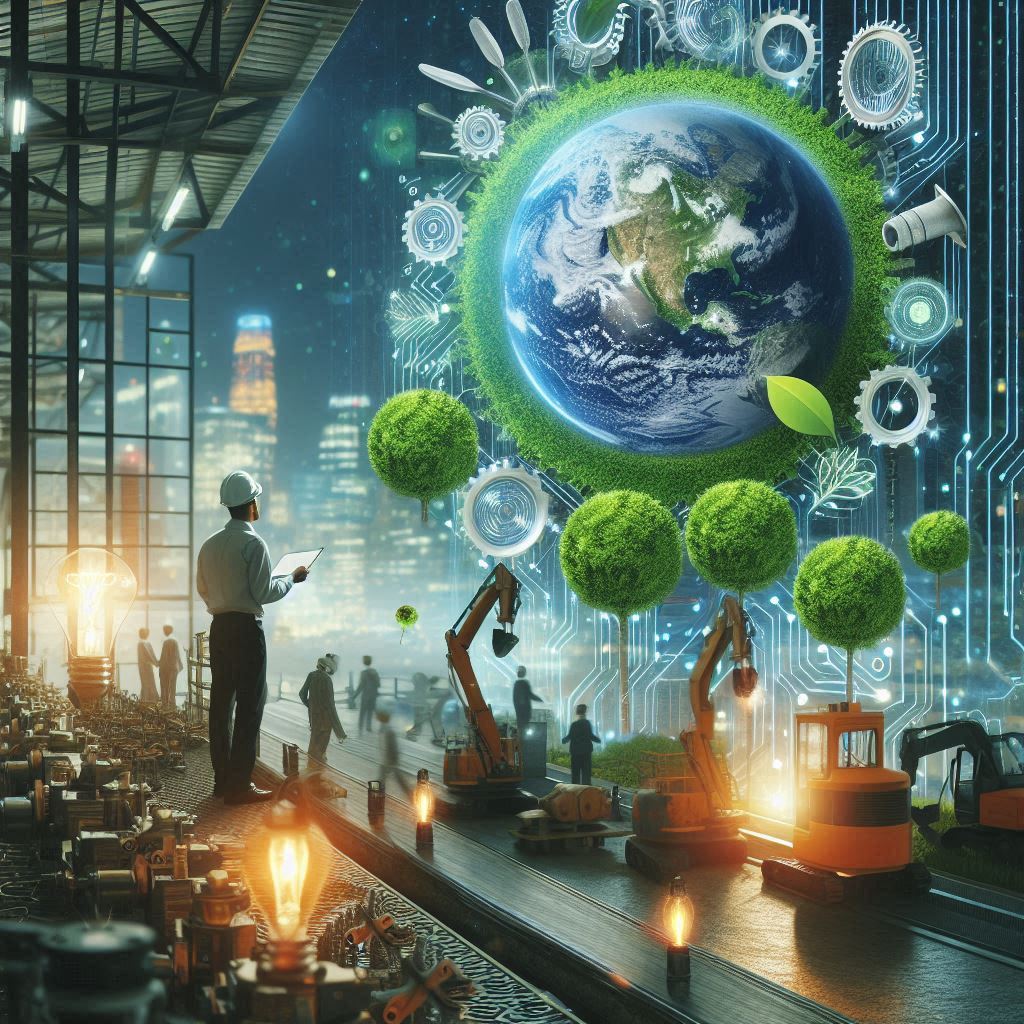Smart, Sustainable, and Efficient: The Rise of Green Automation
Introduction
In an era where industries are under increasing pressure to reduce their carbon footprint and improve efficiency, green automation has emerged as a game-changer. By integrating smart technologies with sustainable practices, industries can significantly cut energy consumption, minimize waste, and drive productivity. From AI-driven manufacturing to energy-efficient robotics, the rise of green automation is revolutionizing industrial operations for a more sustainable future.
The Need for Green Automation
Traditional industrial processes have long been associated with high energy usage, resource depletion, and significant environmental impact. Key challenges include:
- Excessive energy consumption leading to high carbon emissions.
- Industrial waste generation causing pollution and inefficiency.
- Over-reliance on fossil fuels for power and transportation.
- Operational inefficiencies due to outdated manufacturing techniques.
Green automation addresses these issues by incorporating intelligent, data-driven technologies that optimize processes and reduce resource wastage.
Key Innovations Driving Green Automation
Green automation leverages cutting-edge digital solutions to create a more sustainable industrial ecosystem. Some of the major innovations include:
1. AI and Machine Learning for Energy Optimization
- Predictive analytics help industries monitor and reduce energy consumption.
- AI-driven process automation minimizes energy waste in production lines.
- Smart grid integration ensures optimal energy distribution and consumption.
2. IoT-Enabled Smart Factories
- IoT sensors track real-time energy usage, waste levels, and system performance.
- Automated maintenance alerts prevent equipment failures and reduce downtime.
- Cloud-based monitoring systems enable remote optimization of industrial operations.
3. Energy-Efficient Robotics
- Adaptive robots adjust energy usage based on workload, reducing unnecessary consumption.
- Collaborative robots (cobots) streamline workflows and enhance efficiency.
- Recyclable and biodegradable materials are being integrated into robotic manufacturing.
4. Renewable Energy Integration
- Solar and wind-powered factories reduce dependence on non-renewable energy sources.
- Battery storage systems allow excess energy to be stored and used during peak demand.
- Hydrogen fuel cells are being explored as a sustainable energy alternative for industrial automation.
5. Circular Economy and Waste Reduction
- AI-powered sorting systems enhance recycling efficiency in industrial waste management.
- 3D printing with recycled materials minimizes material waste and transportation emissions.
- Closed-loop manufacturing reuses byproducts, reducing raw material consumption.
Benefits of Green Automation
Industries that adopt green automation can expect to see significant improvements in sustainability and efficiency:
- Lower carbon footprint: Reduced energy consumption and waste generation.
- Cost savings: Energy-efficient systems lead to lower operational expenses.
- Enhanced productivity: Smart automation streamlines workflows and reduces downtime.
- Regulatory compliance: Meeting environmental regulations and sustainability goals.
- Brand reputation: Consumers and stakeholders prefer companies with strong sustainability commitments.
Challenges and the Road Ahead
While green automation presents exciting opportunities, industries must overcome challenges such as:
- High initial investment in automation technologies.
- Workforce adaptation to new AI-driven systems.
- Integration complexities in existing industrial infrastructure.
To accelerate adoption, governments and corporations must collaborate to:
- Provide incentives and subsidies for sustainable automation projects.
- Invest in workforce training to upskill employees for smart factory operations.
- Develop global standards for eco-friendly industrial automation practices.
Conclusion
Green automation is not just a trend—it is the future of industrial manufacturing. By leveraging AI, IoT, renewable energy, and efficient robotics, industries can achieve a smart, sustainable, and efficient mode of operation. The shift towards green automation is essential for tackling climate change, improving industrial productivity, and paving the way for a cleaner, more sustainable future.
As industries embrace these innovations, the world moves one step closer to a low-carbon, resource-efficient economy where sustainability and efficiency go hand in hand.
